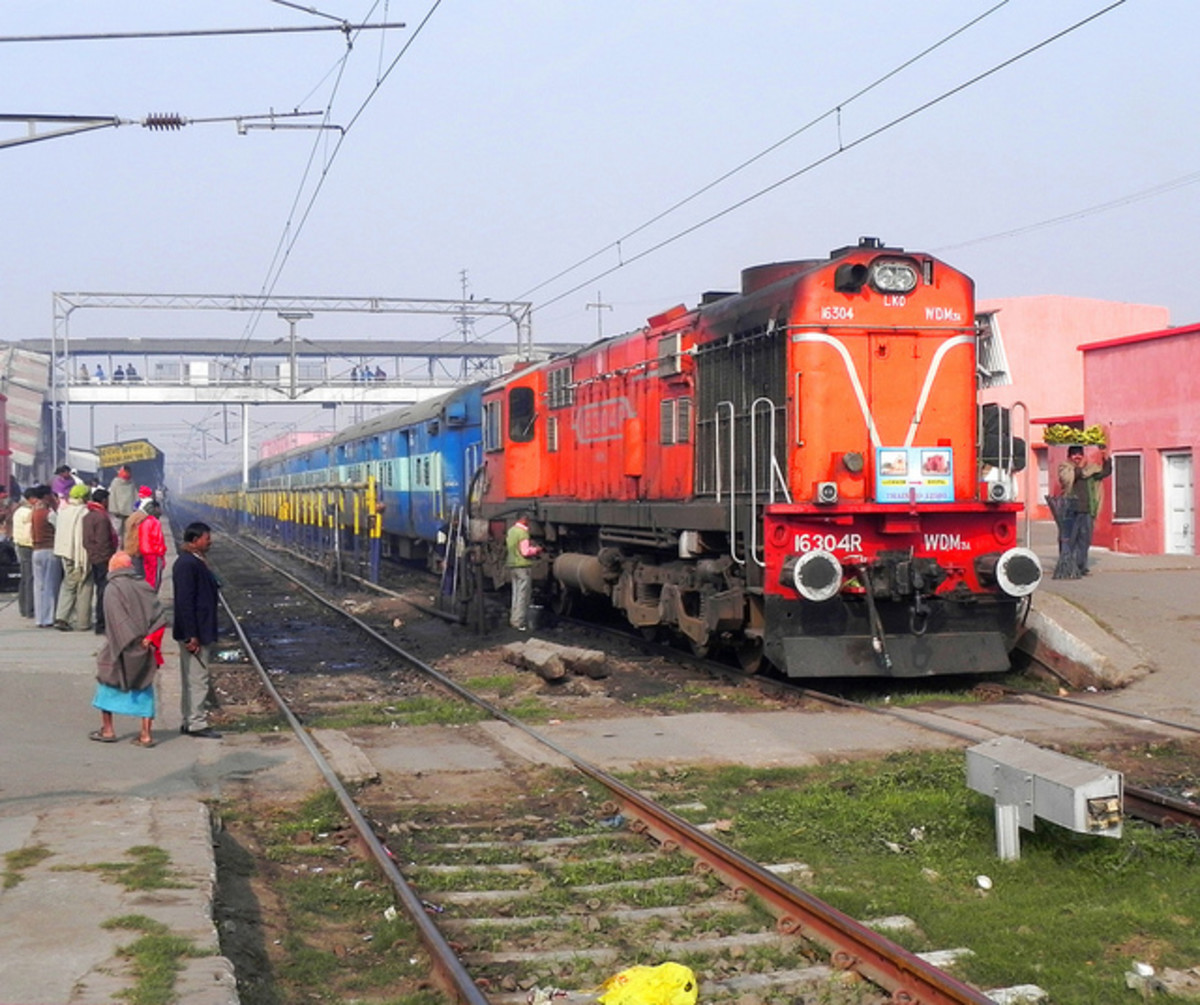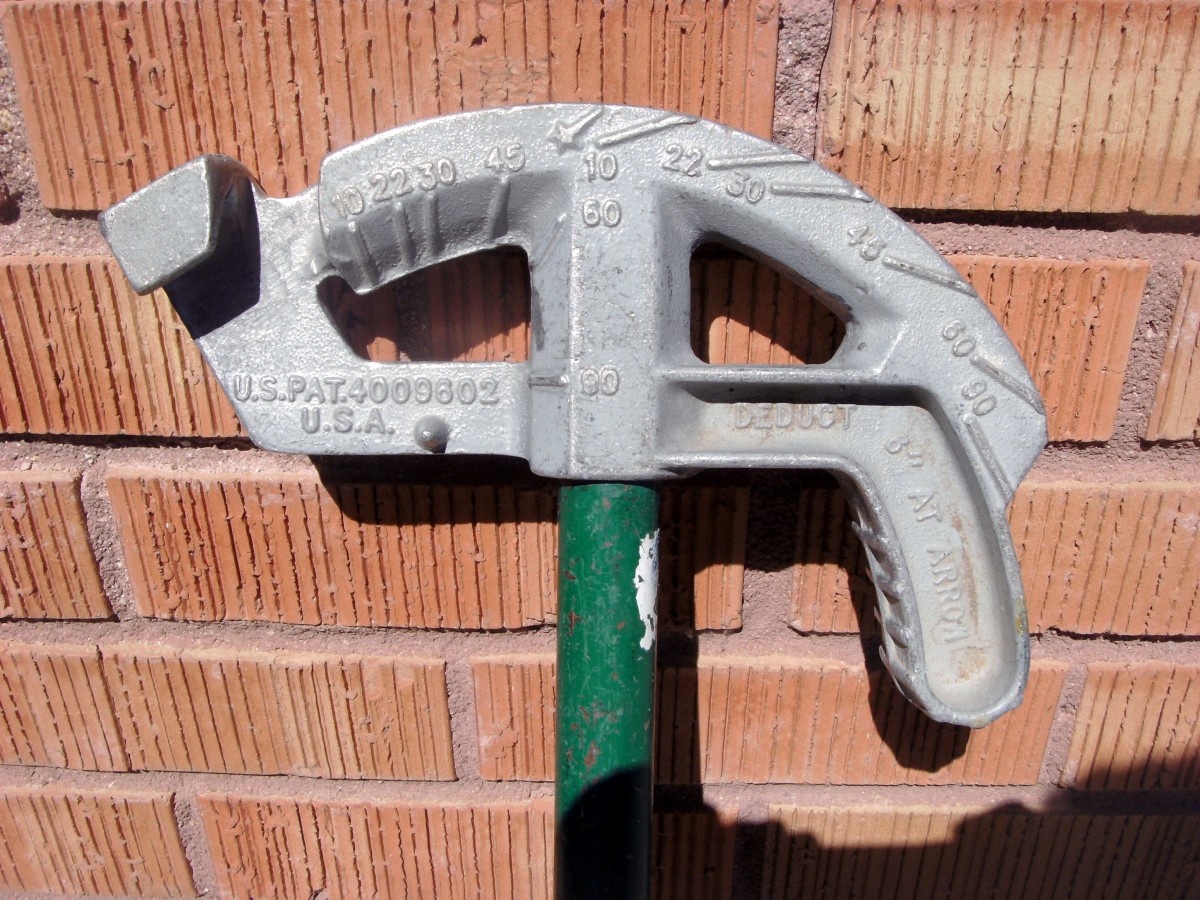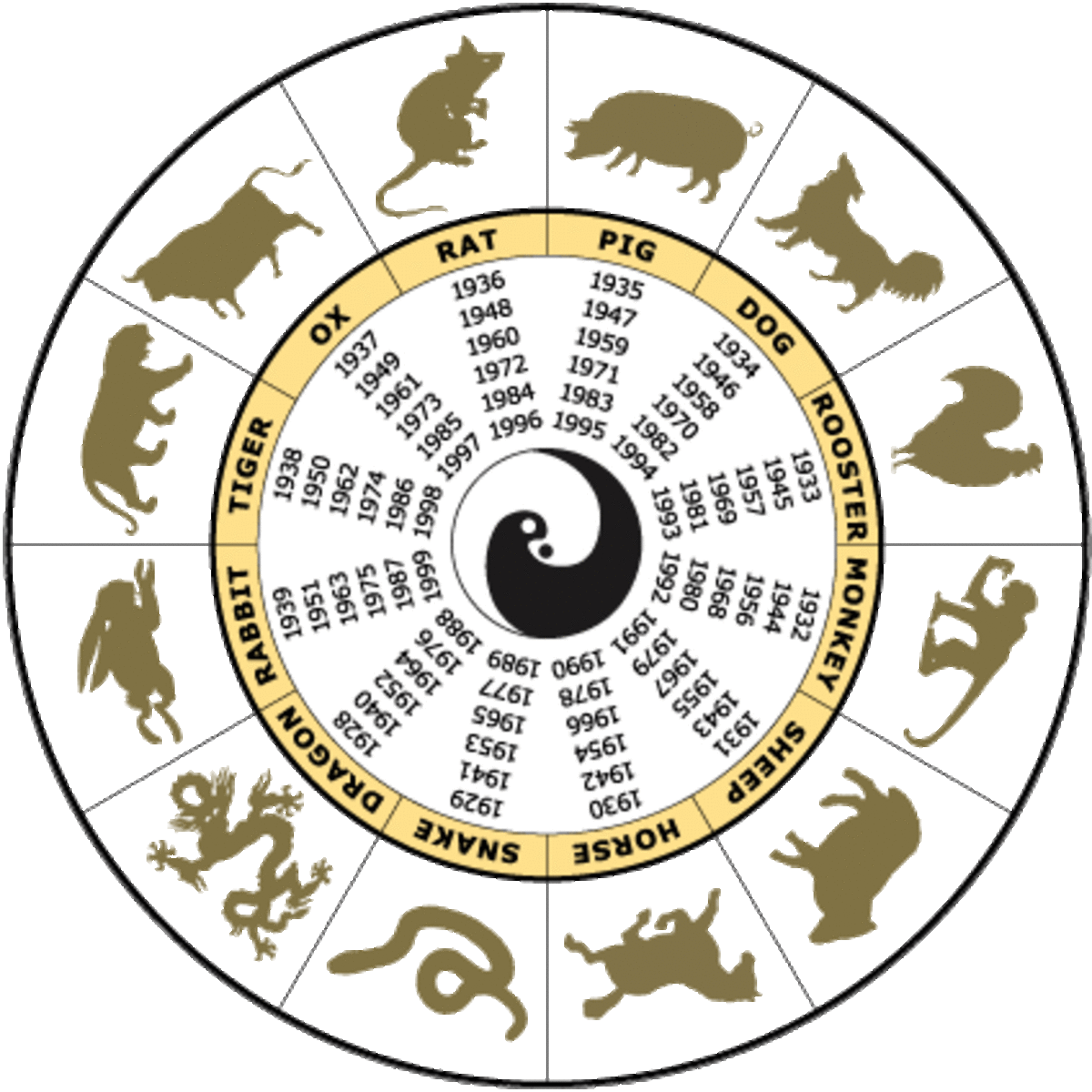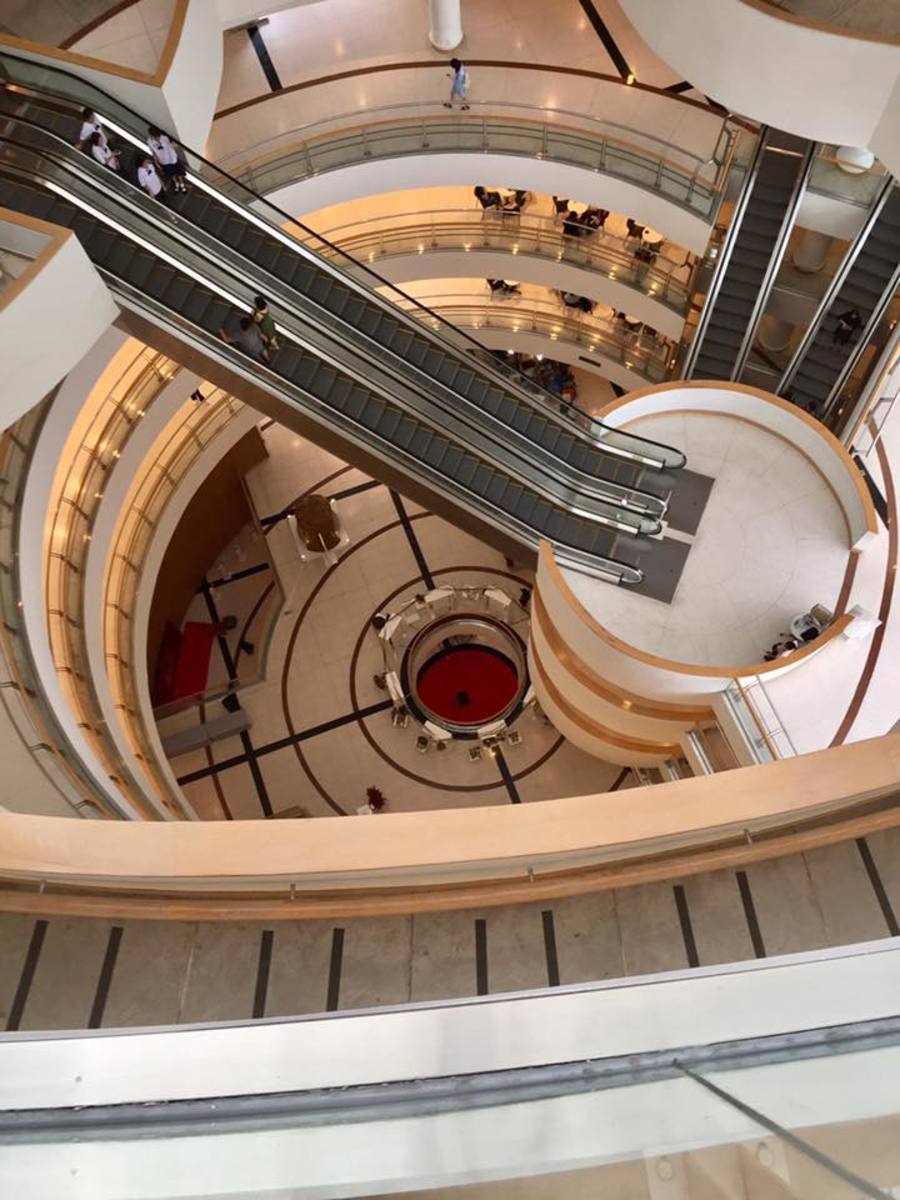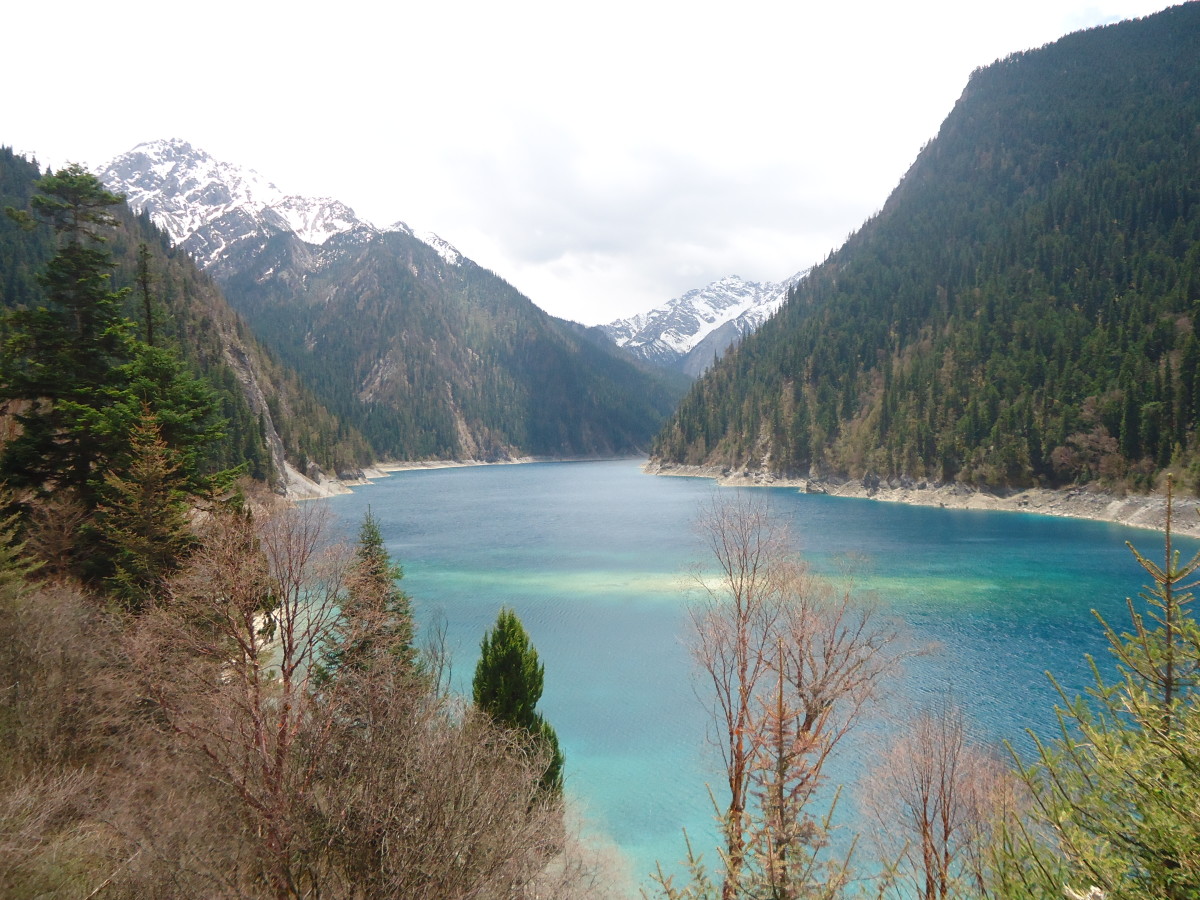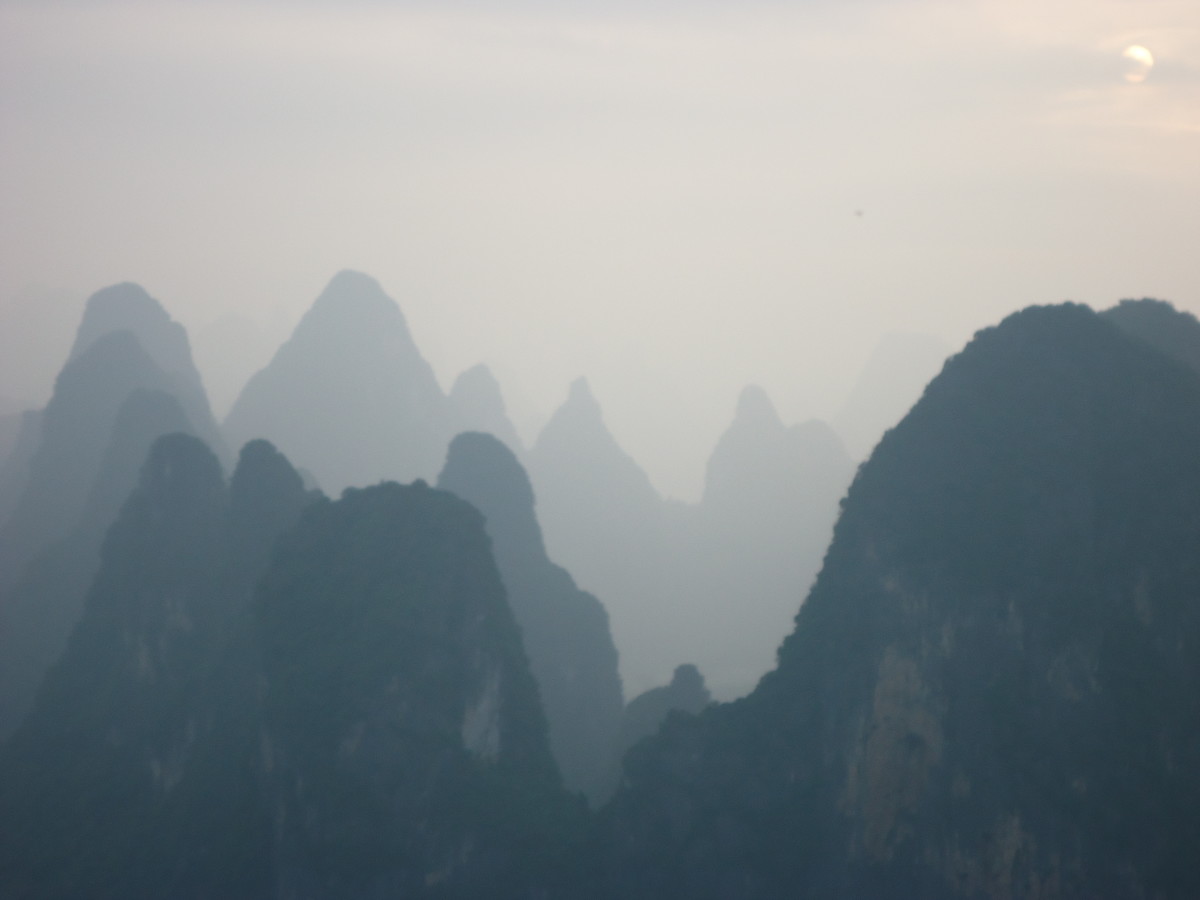- HubPages»
- Travel and Places»
- Visiting Asia»
- Eastern Asia
The Comprehensive Guide to Travelling in Turpan, China
Why visit Turpan?
Located in a depression 154m below sea level, Turpan is one of the driest and hottest locations on Earth. Despite facing impossible odds, the inhabitants have transformed this unforgiving land into a major agricultural hub that contributes up to 80% of China's total grapes production.
This region is also steeped in history, with two large archaeological sites where proud cities once stood, and the legendary Flaming Mountains of "Journey to the West" fame.
In this guide, you'll know where to visit, what local cuisine to try, and the various means to travel within the region. You'll also learn the tricks to stretch your budget and stay safe.
Bezeklik Caves, where ancient Buddhist art are preserved on cave walls
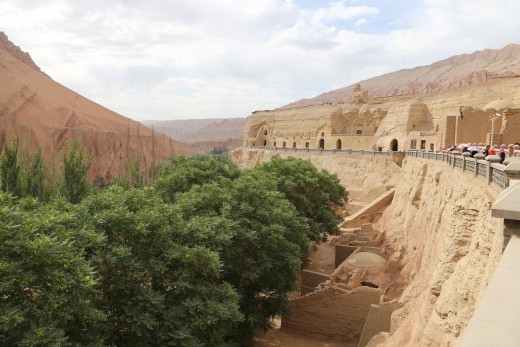
How hot can Turpan get?
In the summer between May to August, the temperature in the desert of Turpan will peak above 40°C, and record highs of 47.8°C has been recorded. As you can imagine, this is not a good time for hiking in the mountains.
On the other hand, the temperature will plummet drastically to an average of -10°C in the middle of winter, with a record low of -28°C - still not a good time to be hiking!
Getting into Turpan
By Train
The easiest way to reach Turpan is by rail, which is a cheap, reliable and efficient mode of transportation. Train tickets can be reserved on Ctrip, and generally the sleeper cabins are clean and well-maintained.
Note that the Turpan train station is not near the city. In fact, it's located 15km away, and will require a taxi to get to town. Depending on your bargaining skills, you might be able to hire a whole taxi for 50 Yuan or share the cost with other travellers.
A cheaper alternative is to board the local bus. The bus station is 5 minutes away from the train station, so ask around for the directions. A ticket to town will cost 11 Yuan.
By Plane
Turpan Jiaohe Airport is also located near the train station, so expect to hire a taxi or find your way to the bus station. This is the fastest way to get to Turpan, as land-based transportation is usually slower due to road conditions.
By Bus
If you're looking for a cheap and scenic ride, this is it. Buses head to Turpan from many cities in Xinjiang and Gansu daily, and the journey is generally comfortable and air-conditioned.
Grape vines as shelters from the blazing sun
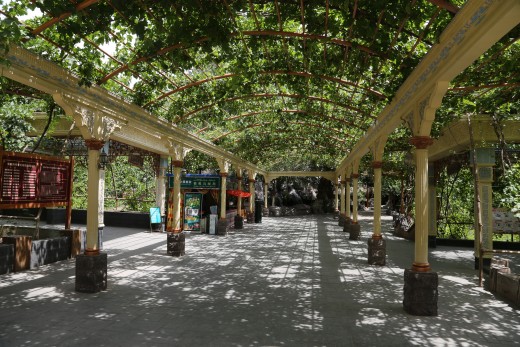
The people of Turpan
Turpan is inhabited mainly by the Uighurs, who make up 70% of the population, followed by the Han Chinese. Most Uighurs are muslims, and have more in similarity to their central Asian neighbours than the Chinese. The people are laid back and friendly, but do respect their culture and traditions, especially when it comes to alcohol and pork consumption.
While the official language is Mandarin Chinese, expect to hear Uighur spoken widely. Impress the locals by learning a few words!
Things to see and do in Turpan
Grape Valley
Framed by stark, barren mountain slopes, the Grape Valley ("Pu Tao Gou") is where most of the grapes are grown. You'll find little huts where the locals dry their produce to make raisins as well.
Entrance to this 170,000 sqm farm is 90 Yuan, and there are 5 attractions within the Grape Valley, each a manicured garden with a theme. You'll probably want to hire a car to get around, as the distances between them is quite far.
Bezeklik Caves
If you've seen the famous Mogao Caves, then this is a similar set of grottoes that are decorated from floor to ceiling with vividly painted Buddhist art. Dating back centuries across many different Chinese dynasties, the Bezeklik Caves are a reminder of the historical significance of Turpan in the spread of Buddhism.
Flaming Mountains
Paying homage to the Chinese classic "Journey to the West", this spot marks the place where the monk Xuanzang and his followers were blocked by a wall of flames. As the story goes, the Monkey King Sun Wukong used his wits and fighting prowess to defeat some enemies and fan out the flames, so the group could carry on their journey.
Today, this is a somewhat tacky tourist attraction with statues of the legendary characters from the story, and there's also a small indoor exhibition on the local geology.
Gaochang Ancient City / Jiaohe Ancient City
Both these sites are significant on their own, but for the average tourist, visiting one is probably enough. Still reasonably preserved, these cities were founded in the first to second century AD, and were eventually abandoned as China went through many political upheavals in its long history.
To make the most of it, engage a guide or read up before visiting the site, so you will understand the significance of "that mound of rock" or "the other mound of rock".
Kariz Wells
The Kariz channels were built as far back as 2,000 years ago, to bring fresh water from the nearby mountains to irrigate the barren desert of Turpan. Ingenious in its design and carved through sheer human grit, the Kariz wells still supply water to farms today - a testament to its technology and construction technique.
Getting around Turpan and visiting the local attractions
Turpan has many interesting sights to visit, but all of them are out the town. If you're on a tight budget, public buses do reach some of these places, but you might need to spend a lot of time waiting.
A better option is to share a private car with other travellers. A day tour costs 900 Yuan, and when split among 4 people, it's actually quite reasonable!
Tourists riding a camel behind the Flaming Mountains
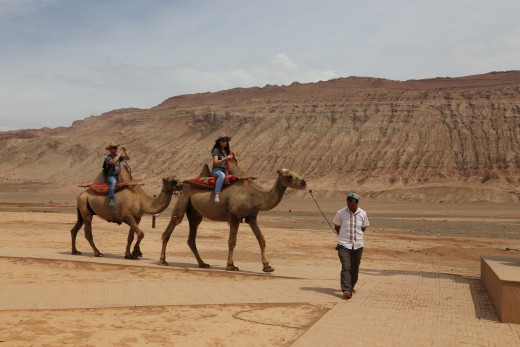
Entrance fees to Turpan attractions
Attraction
| Entrance Fee
|
|---|---|
Gaochang Ancient City
| 100 Yuan
|
Jiaohe Ancient City
| 115 Yuan
|
Grape Valley
| 90 Yuan
|
Bezeklik Caves
| 40 Yuan
|
Flaming Mountains
| 60 Yuan
|
Karez Wells
| 30 Yuan
|
The Mare's Nipple
It's not what you think. The Mare's Nipple is a type of grape that is grown locally in Turpan, and is renowned for its sweetness. As such, raisins made from it can fetch a high price outside Turpan.
You can easily find this varietal of raisin in the Grape Valley. Ask for Manaizi, or look out for these words: 马奶子.
Raisin shopping in the Grape Valley
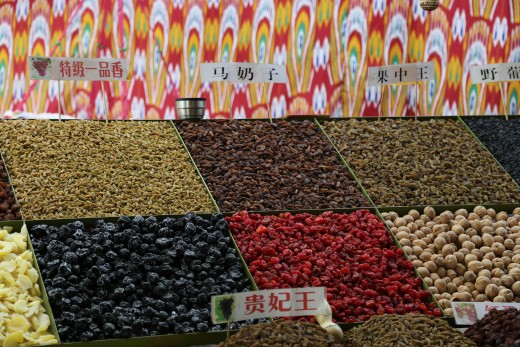
Stay Safe
The Security Situation
Like most cities, Turpan is relatively safe from violent crimes. In recent years, unrest between Han Chinese and the Uighur population has resulted in a heavy police presence, and it is common to see armoured trucks or a police post stationed at every intersection in the city.
Should you be approached by police, have your passport and visa handy for inspection. Guys with beards are more likely to attract attention, as long beards is now outlawed under new public security laws. Women are also not permitted to wear a hijab, tudung or burqa that covers much of the head - instead, wrap a scarf around, as recommended by the authorities.
The Weather
With extreme temperatures, staying healthy and hydrated is very important. Bring along a big bottle of water in summer, and slather on sunblock to reduce the chance of sunburn. A pair of sunglasses is also essential to avoid the glare from the relentless sun.
The Food
Where possible, avoid street food that are not prepared with a clean source of water, and food that have been on display for some time. Bottled water is easily available in the city, so you don't have to drink from the tap. Avoid beverages with ice, unless you are sure the ice is made with mineral water.
What to eat - a quick guide to Uighur cuisine
Dish name
| Description
| Average price
|
|---|---|---|
Polo / Pilaf
| Oil rice with chopped carrots and pieces of lamb
| 5-15 Yuan
|
Laghman / La mian
| Noodles served in soup or on a plate along with chopped vegetables
| 5 - 15 Yuan
|
Kebab
| Barbecued lamb meat on skewers
| 1-5 Yuan per stick
|
Dumplings
| Pieces of vegetables or lamb wrapped in wanton skin
| 10 - 20 Yuan
|
Sesame chicken
| Whole or half chicken cooked in an earthen stove
| 20 - 30 Yuan
|
Naan
| Bread baked in earthen stoves
| 1 - 5 Yuan per piece
|
A plate of Laghman
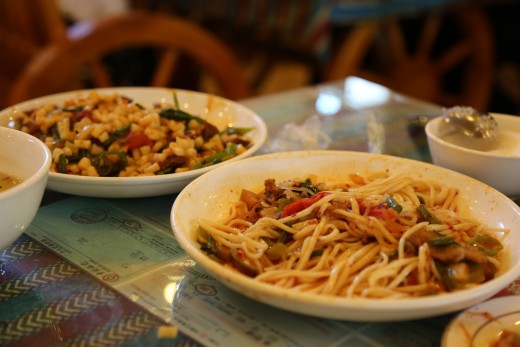
Quick poll
Do you prefer travelling to see places of cultural interest or scenic beauty?
Conclusion
Turpan should definitely be on every Xinjiang travel itinerary, and 2 days is probably just about enough to cover only the tourist attractions. If you want to explore the city, cater more time so you don't have to rush.
If you're looking for travellers to share a taxi, check out DAP hostel. They have lots of backpackers and a friendly reception staff.
Remember that Turpan gets really hot in summer and really cold in winter, so dress accordingly and plan ahead. Remember, this is not a big city like Beijing or Shanghai!

